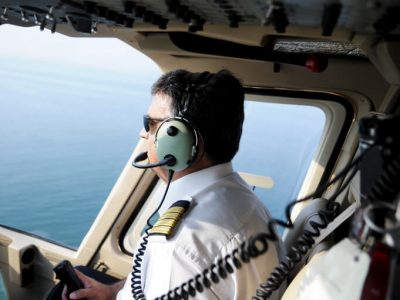Crew Resource Management During Difficult Situations
The recently released final report on the fatal 2021 crash of a Bombardier Challenger 605 paints a disheartening picture. Lack of crew resource management (CRM), ill-advised decisions by the pilot in command, and the captain’s failure to intervene resulted in the loss of all lives on board.
One cannot help but speculate on the captain’s thought process as the situation spiraled out of control during the approach. One cannot help but wonder if more CRM training would have given the pilot not flying for personal authority to take control of the aircraft when things became dire. There seemed to be ample time to abort the unstable approach and ensure survival, though that opportunity slipped away.
Managing Situations in Flight
Before we look further into this flight, let’s look at some crew resource management and strategies and steps that can help pilots recognize and effectively manage situations in flight.
Ensuring Safety and Survival
Taking responsibility during challenging flight situations is paramount to ensure the safety and survival of all onboard. Pilots’ actions and decisions directly impact the flight’s outcome, especially in critical moments. By maintaining calm under pressure and assuming control, we can assess the situation objectively, make informed decisions, and take immediate action to mitigate risks and protect lives.
Recognizing the Signs of Trouble
Pilots must be vigilant and attentive to recognize signs of trouble before they escalate. This includes monitoring weather conditions, engine and system performance, instrument readings, and observing any abnormal behavior or sounds. Early detection enables us to proactively address issues and prevent them from spiraling into more severe situations.
Mechanical Failure and Systems Malfunction
Recognizing and mitigating human errors is integral to maintaining control during challenging flight situations. Pilots must take responsibility for their performance by adhering to standard operating procedures, continuously practicing good communication, exercising effective crew resource management, and monitoring their fatigue levels and mental states.
Bombardier Accident Report Review
The accident report for the Bombardier crash is perplexing. A glaring error of CRM is that it is unclear who was in control of the aircraft. While investigators initially believed the first officer was the pilot flying, subsequent evidence reveals the first officer repeatedly requested control as the approach deteriorated. Despite possessing less experience, the captain resisted the first officer’s guidance, making it challenging to ascertain each pilot’s responsibilities.
Nevertheless, the pilot flying fought hard to salvage the deteriorating approach, but ultimately, it proved impossible. Overshooting the extended centerline, a drastic left turn was executed to realign with the runway, triggering the stall protection systems, which, unfortunately, went unheeded by the crew. Moreover, they found themselves at an excessive altitude, leading to an erroneous deployment of flight spoilers, further diminishing the aircraft’s stall margin.
Originally scheduled for runway 20, the crew deemed it too short and opted to approach runway 20 and circle for runway 11. However, this crucial decision was never discussed or briefed, resulting in a cascade of critical errors. The crew found themselves too high, too fast, banking at an excessive angle, and in the wrong configuration.
Throughout the ordeal, one pilot desperately tried to gain control of the aircraft, but the pilot flying refused to relinquish command. As the stick shaker warning sounded, the plane violently rolled to the left, stalled, and tragically crashed. Contemplating the sequence of events sends shivers down the spine. This flight lacked effective crew resource management, and the consequences speak volumes.
Learning from Our Mistakes
Studying past accidents and incidents serves as a reminder of the importance of taking control and assuming responsibility. Many tragic events could have been avoided if pilots had intervened and taken appropriate action in critical moments. Below are some ways crews can manage challenging situations in flight:
- Maintain situational awareness: Stay informed about your aircraft’s position, altitude, speed, and terrain. Continuously monitor weather conditions, instrument readings, and air traffic.
- Communicate effectively with air traffic control: Maintain clear and concise communication with air traffic control, providing updates on the situation, requesting assistance when needed, and following instructions promptly.
- Prioritize decision-making: Evaluate the available options and make decisions based on safety and risk assessment. Consult with the crew, listen to their inputs, and ensure consensus on the course of action.
- Implement emergency procedures: Be familiar with emergency checklists and procedures specific to your aircraft. Act swiftly and decisively when necessary, following established protocols to address emergencies and abnormal situations.
- Seek assistance and support: Recognize when additional expertise or resources are required. Consult with other crew members, contact air traffic control or company operations, and use all available resources to make informed decisions.
Today’s pilot training emphasizes teamwork and active listening to address concerns raised by each pilot. However, we can do better. Perhaps this accident report should be mandatory reading for both initial training and recurrent classes. By maintaining calm under pressure, recognizing signs of trouble, addressing weather conditions, managing mechanical failures, mitigating human errors, learning from past incidents, and implementing effective strategies and steps, we can effectively manage these situations and protect the lives entrusted to our care. By embracing this responsibility, we uphold the highest standards of professionalism and demonstrate our commitment to safety in aviation.










